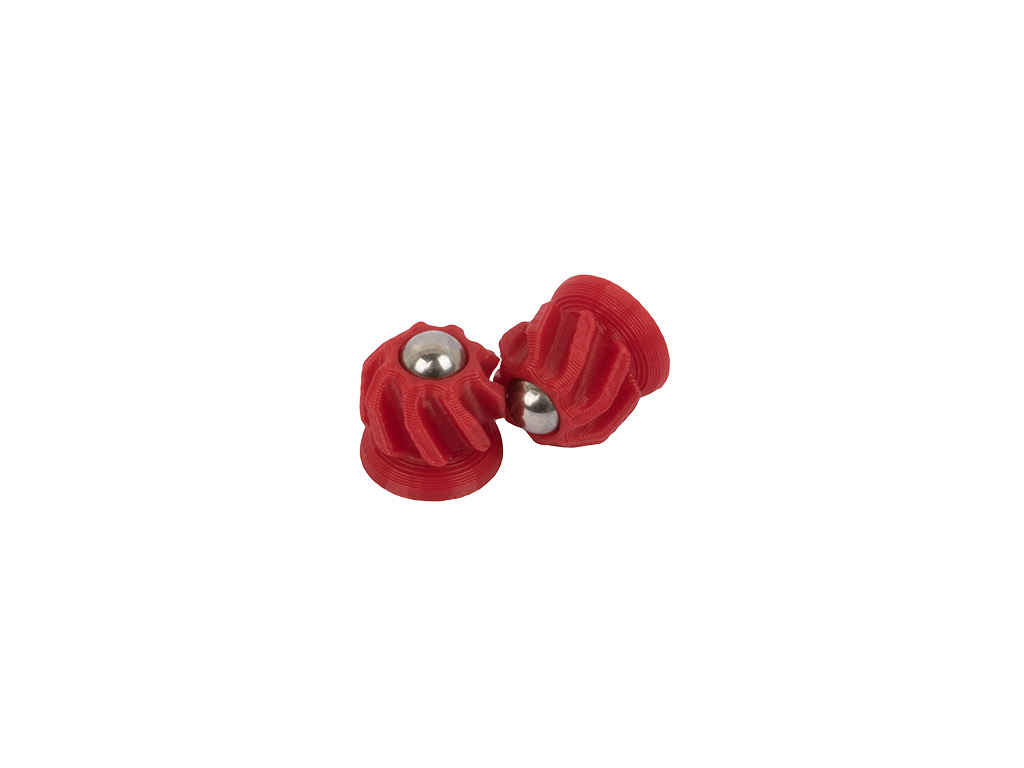Hello everyone,
I've found myself having a huge dillema on whether to buy some 19-24gr T4E .50 Cal projectiles of all kinds, including steel-tipped slugs, aside from just the basic plastic, or otherwise rubber balls; Or on the other hand not to buy them...
These projectiles would be flying really fast, at some 1100 to 1450 fps at the muzzle, by my estimation, and would develop around 35-50 ft/lbs of muzzle energy, although out of a relatively short barrel - only 3.16" long. Would these kinds of projectiles be able to hit a water bottle at 10 yards or so? I reckon the ball shaped 19gr projectiles would, due to their shape. However, I doubt that the ~24gr slugs would fly straight, because of all their weight being distributed at the front, forward of the middle area, due to the steel ball-bearing being positioned there.
I'm talking about these ones:

Is there a way to theoretically test the stability of these slugs at such a high speed at all?!
They're quite expensive for my budget, at a euro.15 per piece from one of my local stores... And with that said, I'm not buying until I get a somewhat reliable answer from one of you guys. I'd really like to know and 'd like to thank anyone who has ever experimented with slugs in advance - It's a pretty unknown territory when it comes down to these T4E slugs
Have a good one y'all!
I've found myself having a huge dillema on whether to buy some 19-24gr T4E .50 Cal projectiles of all kinds, including steel-tipped slugs, aside from just the basic plastic, or otherwise rubber balls; Or on the other hand not to buy them...
These projectiles would be flying really fast, at some 1100 to 1450 fps at the muzzle, by my estimation, and would develop around 35-50 ft/lbs of muzzle energy, although out of a relatively short barrel - only 3.16" long. Would these kinds of projectiles be able to hit a water bottle at 10 yards or so? I reckon the ball shaped 19gr projectiles would, due to their shape. However, I doubt that the ~24gr slugs would fly straight, because of all their weight being distributed at the front, forward of the middle area, due to the steel ball-bearing being positioned there.
I'm talking about these ones:

Spezialgeschosse Slugmakers Best TurboTwist.50 für CO2 Markie...
Durch die turbinenartigen Leitwerke im vorderen Bereich wird der TurboTwist.50 beim Abschuss in eine schnelle, längs-Rotation versetzt. Dadurch ist das Geschoss...
www.versandhaus-schneider.de
Is there a way to theoretically test the stability of these slugs at such a high speed at all?!
They're quite expensive for my budget, at a euro.15 per piece from one of my local stores... And with that said, I'm not buying until I get a somewhat reliable answer from one of you guys. I'd really like to know and 'd like to thank anyone who has ever experimented with slugs in advance - It's a pretty unknown territory when it comes down to these T4E slugs
Have a good one y'all!